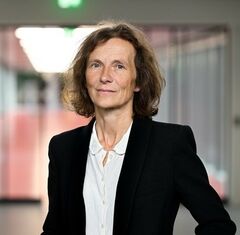TU/e brings together expertise in new institute for semicon
TU/e is establishing a new, university-wide institute dedicated to research into semiconductors, advanced materials and high-tech systems. With this step, the university wants to play an even more leading role in the European high-tech and semiconductor sector. The official launch is in September.
The Eindhoven Hendrik Casimir Institute (EHCI), the High Tech Systems Center (HTSC) and the Future Chips Flagship (FCF) will be incorporated into the new institute and will cease to exist as separate units. With this consolidation, TU/e not only wants to strengthen its internal collaboration, but also to become a single recognizable point of contact for knowledge institutions and companies in the field of chip technology and high-tech.
According to Rector Magnificus Silvia Lenaerts, this is a strategic decision. “Thanks to our leading research, combined with our unique position in the Brainport region, TU/e is ideally positioned to take the lead towards an innovative and sustainable digital pioneering role.”
Across disciplines
The new institute brings together more than seven hundred researchers and focuses on four research domains: future chips, high precision equipment, advanced materials & processes and foundations. The emphasis is on collaboration across disciplines, with the goal of accelerating technological breakthroughs and increasing societal impact.
"We have an incredible amount of expertise in the field of semiconductor, quantum, high-tech systems and fundamental technologies," says Lenaerts. “But we still work too often in closed structures. This institute will bring our communities together. Innovation often happens at the intersections of disciplines. "
Why these four research domains?
"This was partly determined based on input from companies in the Brainport region. We want to educate and research in a market-driven way, so that we remain relevant to society and industry."
What will change for researchers and staff?
"Let me start by saying that we keep what is good and strengthen what works well. In addition, we add a strategic layer. Researchers gain more insight into what is happening in adjacent fields, which can also provide inspiration for new research."
Will all the staff of the current institutes be included?
"That is our intention. We’ve held discussions with everyone involved. They will form a new team, with a managing director and four scientific coordinators, one for each domain. New staff will only be hired if necessary."
Is this step also linked to the Beethoven programme?
“Beethoven has a major task to educate more people for the semiconductor industry. By connecting our research communities more effectively, we can make our education more future-proof as well. For example, we’re looking at new Master’s tracks aligned with current industry needs.”
What does the collaboration with external partners look like?
"We continue to work closely with regional partners such as ASML and NXP, but we are also explicitly looking beyond borders. We are selective of who we bring in as an academic partner. Knowledge security and excellence is an essential criterion."
What role can TU/e play in Europe with this institute?
"Europe is still strongly dependent on non-European parties for chips, equipment and critical materials. That makes us vulnerable. With this institute, we want to contribute to Europe's technological sovereignty."
Will there be a physical location for the institute on campus?
"No final decision has been made about that yet. However, in 2028 en 2029 there will be new buildings with cleanrooms and high-tech labs, where this institute could be located. No name has been thought of for the new institute yet. This will be announced during the official launch on September 30 at the Future of Chips event.”



Discussion